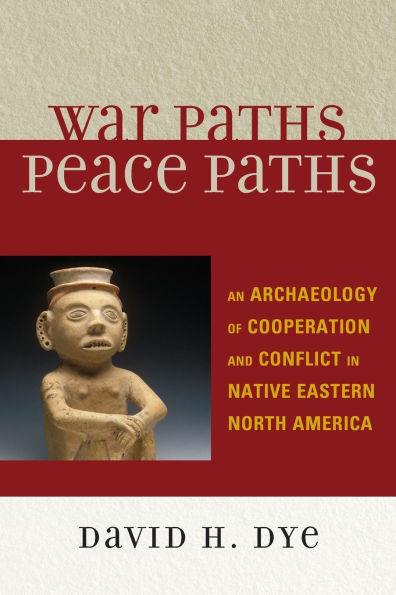War Paths, Peace Paths: An Archaeology of Cooperation and Conflict in Native Eastern North America
Archaeologists, ethnohistorians, osteologists, and cultural anthropologists have only recently begun to address seriously the issue of Native American war and peace in the eastern United States. New methods for identifying prehistoric cooperation and conflict in the archaeological record are now helping to advance our knowledge of their existence and importance. Focusing on four major issues in prehistoric warfare studies—settlement patterns, skeletal trauma, weaponry, and iconography—David H. Dye presents a new interpretation of ancient war and peace east of the Mississippi. He considers evidence for raiding and more organized forms of warfare, accounts of native warfare witnessed by sixteenth-century Europeans, and the various causes of warfare, such as revenge, competition for resources, and ideology. War Paths, Peace Paths offers an innovative analysis of cooperation and conflict in the prehistoric eastern United States.
1147612235
War Paths, Peace Paths: An Archaeology of Cooperation and Conflict in Native Eastern North America
Archaeologists, ethnohistorians, osteologists, and cultural anthropologists have only recently begun to address seriously the issue of Native American war and peace in the eastern United States. New methods for identifying prehistoric cooperation and conflict in the archaeological record are now helping to advance our knowledge of their existence and importance. Focusing on four major issues in prehistoric warfare studies—settlement patterns, skeletal trauma, weaponry, and iconography—David H. Dye presents a new interpretation of ancient war and peace east of the Mississippi. He considers evidence for raiding and more organized forms of warfare, accounts of native warfare witnessed by sixteenth-century Europeans, and the various causes of warfare, such as revenge, competition for resources, and ideology. War Paths, Peace Paths offers an innovative analysis of cooperation and conflict in the prehistoric eastern United States.
53.0
In Stock
5
1

War Paths, Peace Paths: An Archaeology of Cooperation and Conflict in Native Eastern North America
238
War Paths, Peace Paths: An Archaeology of Cooperation and Conflict in Native Eastern North America
238Paperback(New Edition)
$53.00
53.0
In Stock

Product Details
| ISBN-13: | 9780759107465 |
|---|---|
| Publisher: | Bloomsbury Academic |
| Publication date: | 02/16/2009 |
| Series: | Issues in Eastern Woodlands Archaeology |
| Edition description: | New Edition |
| Pages: | 238 |
| Product dimensions: | 6.00(w) x 8.90(h) x 0.60(d) |
About the Author
From the B&N Reads Blog
